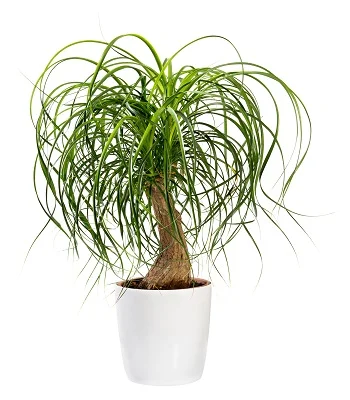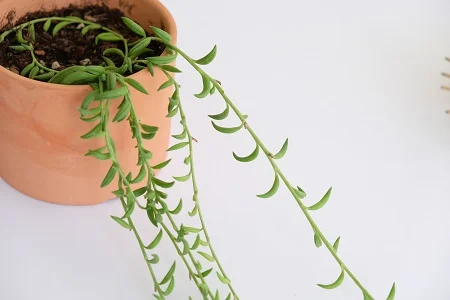Diverse Succulent Plants for Every Environment
Succulent
We have all been mesmerized by succulent plants, where nature’s artistry meets resilience in an array of captivating forms. Thanks to their ability to thrive in various conditions and add a touch of green elegance to any space, succulents have become cherished companions for plant enthusiasts worldwide. These hardy plants are not just visually appealing; they also play a crucial role in indoor and outdoor ecosystems, contributing to improved air quality and serving as delightful stress relievers.
Before we dive into the specifics of each succulent, let’s explore some intriguing facts about these remarkable plants. Succulents, known for their ability to store water in their fleshy leaves, stems, or roots, have adapted to thrive in arid environments. With over 25 plant families and approximately 10,000 species falling under the succulent category, these plants exhibit a remarkable diversity in size, shape, and colour. Succulents have gained immense popularity in recent years, becoming a staple in homes, offices, and gardens for their aesthetic appeal and minimal maintenance requirements.
Now, let’s embark on a journey through some of the most popular succulent plants that have captured the hearts of plant enthusiasts worldwide.
Burro’s Tail (Sedum morganianum) 
Main Attributes: Burro’s Tail, also known as the Donkey Tail plant, is characterized by its trailing stems adorned with plump, teardrop-shaped leaves. The succulent’s unique appearance makes it a favourite for hanging baskets or elevated planters.
Favourable Conditions: Provide well-draining soil, ample sunlight, and occasional watering to keep the soil slightly moist. Burro’s Tail thrives in warm temperatures and is ideal for both indoor and outdoor settings.
Planting Tips: Plant in a hanging basket or container with drainage holes to prevent waterlogging. Ensure the plant receives bright, indirect light for optimal growth.
Watering and Feeding: Water sparingly, allowing the soil to dry out between watering sessions. Fertilize during the growing season (spring and summer) with a balanced, diluted succulent fertilizer.
Hens-and-Chicks (Sempervivum): 
Main Attributes: Hens-and-Chicks, or houseleeks, form tight rosettes of fleshy leaves, with “chicks” sprouting around the central “hen.” These hardy succulents come in various colors, creating a captivating mosaic effect.
Favourable Conditions: Plant in well-draining soil in a sunny location. Hens-and-Chicks are cold-hardy and can withstand harsh conditions, making them suitable for outdoor gardens.
Planting Tips: Space plants to allow for proper airflow, preventing rot. Propagate by separating chicks from the main rosette and replanting them.
Watering and Feeding: Water sparingly, especially in winter, to prevent root rot. Fertilize in spring with a diluted succulent fertilizer to support growth.
Jade Plant (Crassula ovata): 
Main Attributes: The Jade Plant, also known as the Money Plant or Lucky Plant, features thick, oval-shaped leaves and a tree-like growth habit. It’s considered a symbol of prosperity and good luck.
Favourable Conditions: Plant in well-draining soil and provide bright, indirect light. Jade Plants are resilient but thrive in consistent conditions. Avoid overwatering, as they are susceptible to root rot.
Planting Tips: Use a container with drainage holes to prevent water accumulation. Prune to maintain a compact shape and encourage branching.
Watering and Feeding: Water when the top inch of soil is dry. Fertilize during the growing season (spring and summer) with a balanced, diluted fertilizer.
Panda Plant (Kalanchoe tomentosa): 
Main Attributes: The Panda Plant, with its soft, fuzzy leaves featuring brown spots, resembles the adorable panda bear. This succulent adds a charming touch to any collection.
Favourable Conditions: Plant in well-draining soil and provide bright, indirect light. Panda Plants prefer warm temperatures and can tolerate drought conditions.
Planting Tips: Allow the soil to dry between watering sessions. Ensure proper ventilation to prevent fungal issues.
Watering and Feeding: Water sparingly, especially during winter dormancy. Fertilize in spring and summer with a succulent fertilizer.
Ponytail Palm (Beaucarnea recurvata): 
Main Attributes: Despite its name, the Ponytail Palm is not a true palm. It features a bulbous trunk topped with long, arching leaves, creating a unique and eye-catching appearance.
Favourable Conditions: Plant in well-draining soil and provide bright, indirect light. Ponytail Palms are drought-tolerant and can thrive in various light conditions.
Planting Tips: Allow the soil to dry out between watering sessions. Use a container with drainage holes to prevent overwatering.
Watering and Feeding: Water sparingly, especially in winter. Fertilize during the growing season with a balanced, diluted succulent fertilizer.
African Milk Tree (Euphorbia trigona): 
Main Attributes: The African Milk Tree, or Cathedral Cactus, is a striking succulent with upright stems adorned with thorns. Its unique architecture adds a touch of drama to any setting.
Favourable Conditions: Plant in well-draining soil and provide bright, indirect light. African Milk Trees thrive in warm conditions and can tolerate drought.
Planting Tips: Handle with care, as the sap may irritate the skin. Allow the soil to dry out between watering sessions.
Watering and Feeding: Water sparingly, especially in winter. Fertilize in spring and summer with a succulent fertilizer.
Ogre Ears (Crassula ‘Buddha’s Temple’): 
Main Attributes: Also known as Buddha’s Temple, Ogre Ears is a captivating succulent with stacked, triangular leaves that resemble a pagoda or temple. Its unique form makes it a standout addition to any succulent collection.
Favourable Conditions: Plant in well-draining soil and provide bright, indirect light. Ogre Ears thrive in warm temperatures and can be grown both indoors and outdoors.
Planting Tips: Allow the soil to dry out between watering sessions. Prune to maintain the desired shape and encourage compact growth.
Watering and Feeding: Water sparingly, especially in winter. Fertilize during the growing season with a balanced, diluted succulent fertilizer.
String of Pearls (Senecio rowleyanus): 
Main Attributes: The String of Pearls is a charming trailing succulent with spherical, bead-like leaves cascading down gracefully. Its delicate appearance makes it a favorite for hanging baskets and elevated planters.
Favorable Conditions: Plant in well-draining soil and provide bright, indirect light. String of Pearls prefer warm temperatures and are well-suited for indoor settings.
Planting Tips: Use a hanging basket or container with drainage holes to prevent water accumulation. Trim leggy stems to maintain a full appearance.
Watering and Feeding: Water sparingly, allowing the soil to dry out between watering sessions. Fertilize in spring and summer with a diluted succulent fertilizer.
String of Bananas (Senecio radicans): 
Main Attributes: Similar to the String of Pearls, the String of Bananas features banana-shaped leaves trailing down, creating a distinctive and playful appearance.
Favourable Conditions: Plant in well-draining soil and provide bright, indirect light. String of Bananas are drought-tolerant and can adapt to various light conditions.
Planting Tips: Allow the soil to dry out between watering sessions. Trim or propagate to maintain the desired length and fullness.
Watering and Feeding: Water sparingly, especially in winter. Fertilize during the growing season with a balanced, diluted succulent fertilizer.
Haworthia Window (Haworthiopsis attenuata): 
Main Attributes: Also known as the Zebra Plant, Haworthia Window features rosettes of thick, triangular leaves with striking zebra-like patterns. Its compact size and unique aesthetics make it an ideal choice for small spaces.
Favourable Conditions: Plant in well-draining soil and provide bright, indirect light. Haworthia Window is well-suited for both indoor and outdoor environments.
Planting Tips: Allow the soil to dry between watering sessions. Place in a container with drainage holes to prevent waterlogged roots.
Watering and Feeding: Water sparingly, especially in winter. Fertilize in spring and summer with a succulent fertilizer.
With these fascinating succulents, you can create a diverse and visually captivating garden or indoor plant collection. Remember to tailor care routines based on individual plant needs, and enjoy the beauty and resilience these unique succulents bring to your space.









